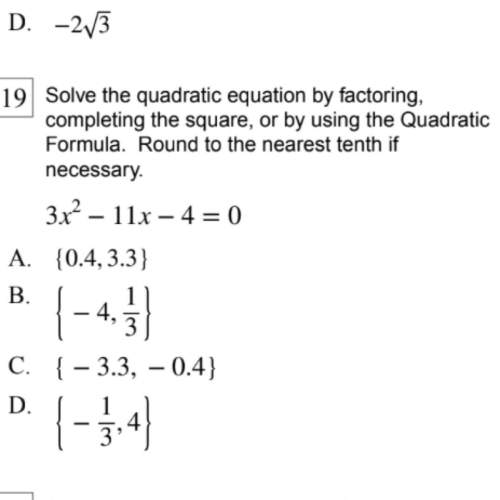
Mathematics, 24.06.2019 04:20 caryscarpenter9118
This problem has two parts, part a and part b. read the proof, and then answer both parts. given: (a+b)2 prove (a+b)2=a2+2ab+b2. statements reasons 1. (a+b)2 given 2. (a+b)(a+b) rewrite the power as a product of the base. 3. _[blank ]_ distributive property 4. a2+ab+ab+b2 distributive property 5. a2+2ab+b2 combine like terms.

Answers: 2


Another question on Mathematics


Mathematics, 21.06.2019 19:30
Lin is writing an equation to model the proportional relationship between y, the total cost in dollars of downloading videos from a website, and x, the number of videos downloaded. she knows that the total cost to download 3 videos was $12. her work to find the equation is shown below. joylin’s work step 1 k= 3/12= 0.25 step 2 y= 0.25x where did joylin make her first error?
Answers: 2

Mathematics, 21.06.2019 20:20
20 solve 2(4 x + 3) < 5 x + 21. a) { x | x < 9} b) { x | x > -5} c) { x | x > -9} d) { x | x < 5}
Answers: 2

Mathematics, 21.06.2019 20:30
Does the function satisfy the hypotheses of the mean value theorem on the given interval? f(x) = 4x^2 + 3x + 4, [−1, 1] no, f is continuous on [−1, 1] but not differentiable on (−1, 1). no, f is not continuous on [−1, 1]. yes, f is continuous on [−1, 1] and differentiable on (−1, 1) since polynomials are continuous and differentiable on . there is not enough information to verify if this function satisfies the mean value theorem. yes, it does not matter if f is continuous or differentiable; every function satisfies the mean value theorem.
Answers: 1
You know the right answer?
This problem has two parts, part a and part b. read the proof, and then answer both parts. given: (...
Questions

Social Studies, 02.02.2020 22:47




Mathematics, 02.02.2020 22:47



Mathematics, 02.02.2020 22:47


Social Studies, 02.02.2020 22:47

Mathematics, 02.02.2020 22:47


Health, 02.02.2020 22:47

Arts, 02.02.2020 22:47




History, 02.02.2020 22:47





